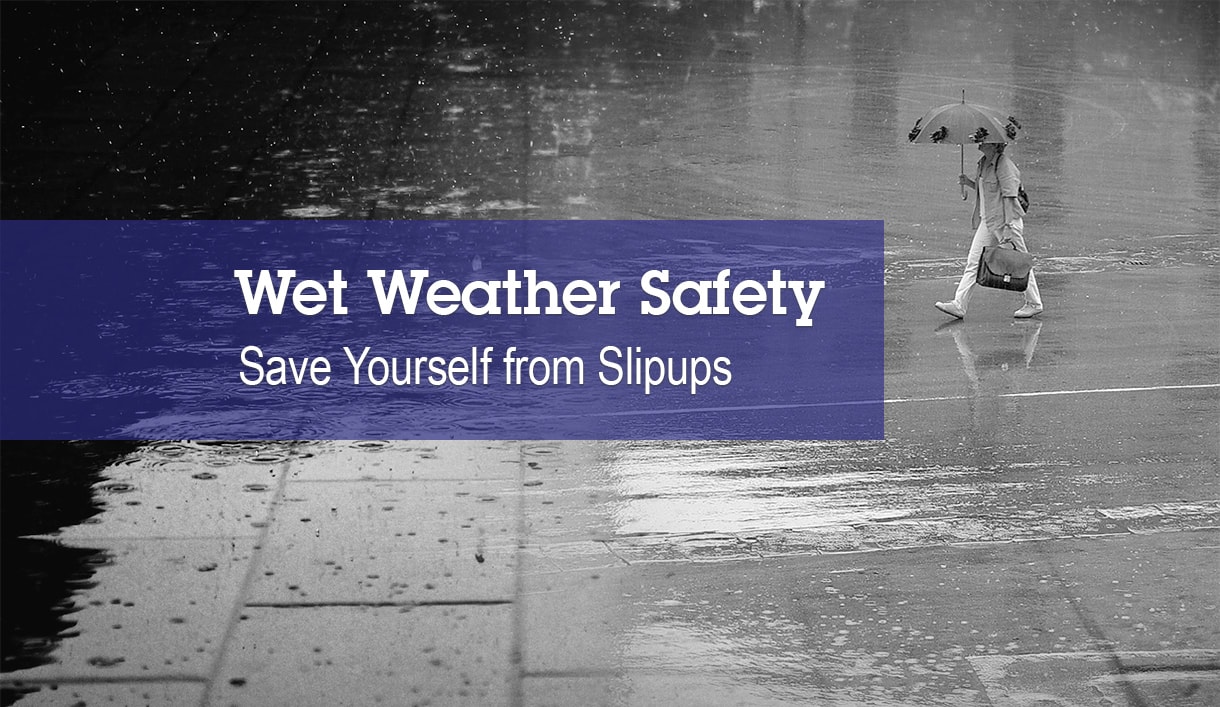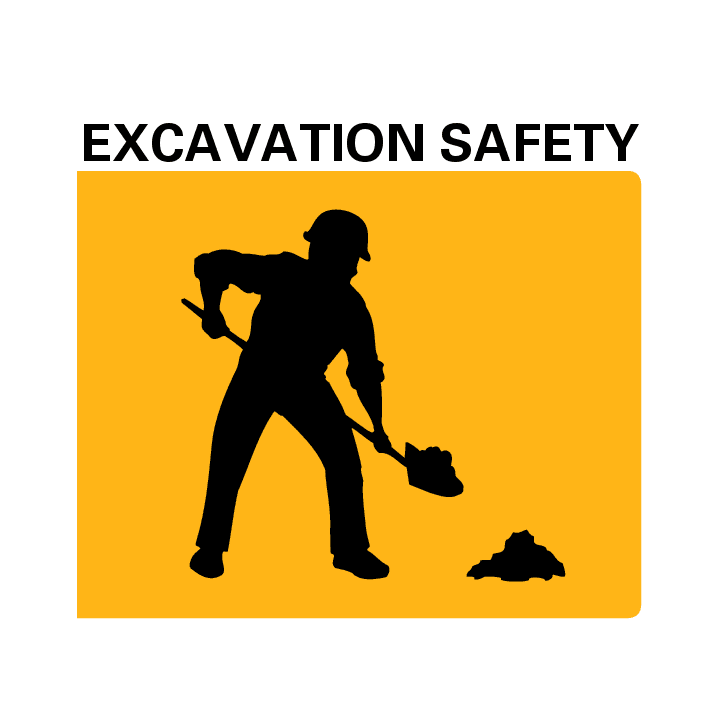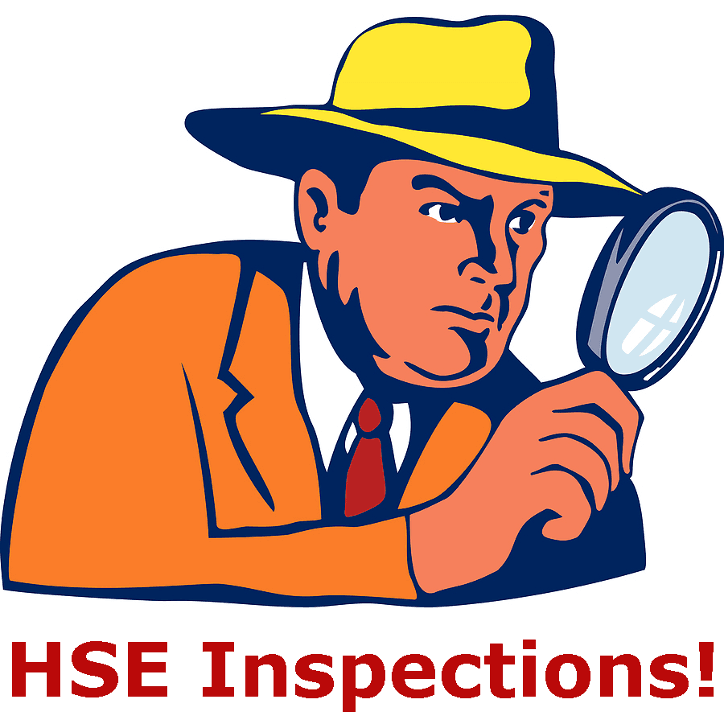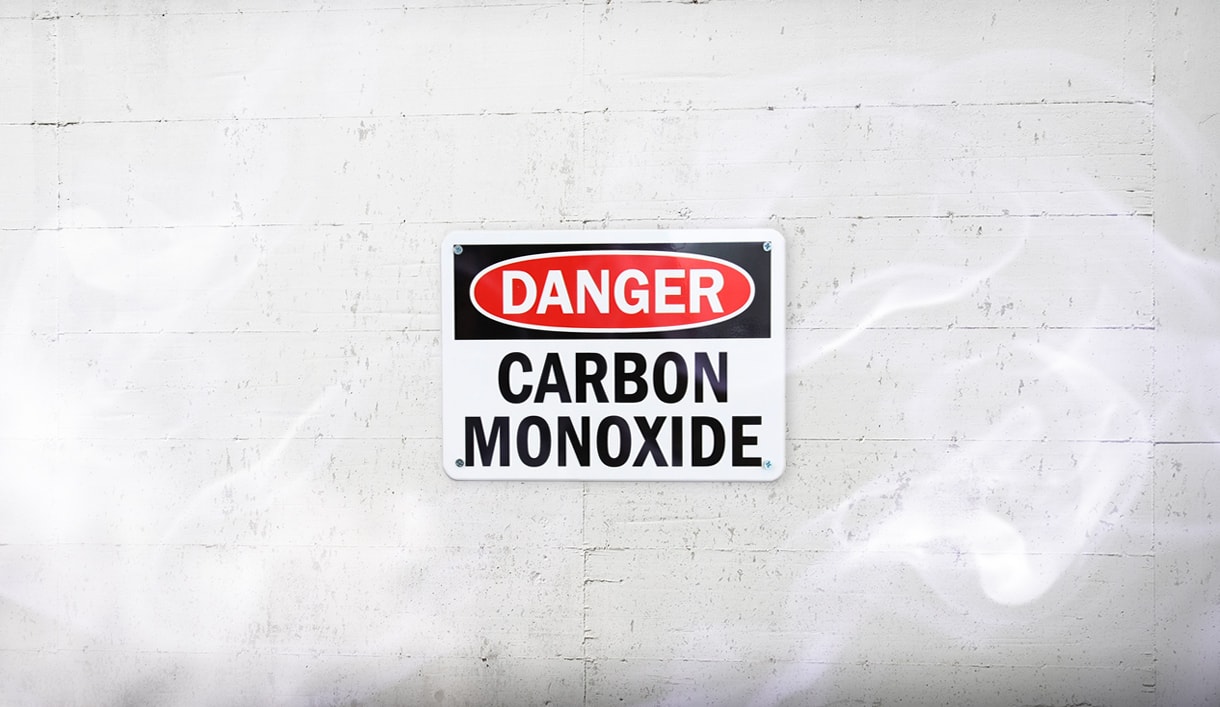Wet Weather Safety
Save Yourself from Slipups
Rain is a fact of life – particularly for SHEilds UK – but as the seasons turn and colder, darker nights close in the risk factor presented can creep up on us, only becoming fully apparent after an incident has occurred.
The tendency to treat bad weather as an inconvenience to be brushed off rather than a set of serious risks to be addressed is what often leads to disastrous results. With largely minor adjustments we can control these risks and ensure routine doesn’t end in tragedy.
In line with this, to help save yourself from slipups – and worse – we’ve gathered some no-nonsense wet weather safety for employees and workplaces.
On Foot
If you tend to travel on foot, bike or in combination with public transport it can be easy to neglect rain related hazards in the scramble of the work commute. However, precautions for the individual on foot are as essential as any other area.
Footwear
As the point of contact between your feet and the damp ground, footwear with firm grip should be your first priority.
Avoid wearing shoes without treads and boots with long heels as these will dramatically increase your chances of slipping, plastic and leather soles also tend to have poor grip. Try wearing boots with deep treads made from non-slip rubber or neoprene and ensure they are in good condition.
Too keep the insides dry it’s also worth making sure the tops of your boots extend over the ankle along with overlapping rain wear.
Calm Down, Slow Down
When rain suddenly falls the all too human instinct is to start running. This is inadvisable for a variety or reason but the most pertinent is the reduction of contact between your feet and the ground; a recipe for a hard fall, a collision with concrete and broken bones.
Calm down, slow down. The chances are that if you’ve been caught by surprise in the rain then you’ll be getting wet whatever you do, but running introduces the unnecessary danger of a high-speed fall. Damp clothes are a preferable tradeoff to a week in hospital.
Keep Warm, but Stay Aware
Wrapping up for the cold and donning waterproofs for the rain is a no-brainer, but be sure to strike a balance with practicality. Keep warm, but stay aware.
Consider for example that a raised hood can obscure your vision of oncoming traffic when crossing roads, while ear muffs may prevent you hearing car horns, bike bells and nearby shouts. Be sure to pull them down/off in situations that demand greater awareness and take a moment longer to assess surrounding risks before moving.
Heavy coats have some additional advantages in the rain however; besides warmth they can also double as something of a cushion in the event of a fall so some padding remains advisable.
Shine Bright
Dark early nights? Time to shine bright. Rain and dim evenings will make it harder for drivers to spot you, so wearing dark colours could put you at unnecessary risk.
If you commute on foot at all you may want to consider shelving your fashionable black wear on rainy days in place of something a little more vibrant and supplement it with reflectors of some kind to be extra safe.
Workplace Precautions
At the other end of a commute it is similarly important that workplace precautions keep employees safe on the premises, addressing wet weather risks.
Adapting the Workplace
Adapting the workplace to address rain risks can be done effectively in a number of ways, including permanent alterations and temporary control measures.
A long-term change made in expectation of heavy rain could include laying paths in places that remove the need to walk over grass or soil, likely to be slippery during a downpour. Fitting a canopy over your entrance can also be a good move, providing shelter on entry and reducing the amount of rainwater that is traipsed in.

Establish NEBOSH qualified expertised in Health and Safety for a better career. Start e-Learning today!
Wet Floors and Slipping
In relation to the latter point, entrances are likely to become the highest risk area of the workplace during rainfall. Water being walked onto hard floors along with operation of doors during strong winds can easily lead to a serious accident.
To counter the risk of wet floors and slipping, some form of large non-slip indoor mat is always a good choice. This may be permanently installed or a temporary control measure deployed in the event of bad weather, preferably with absorbent properties to prevent water pooling.
However, keep in mind that under the wrong circumstances these mats can present risks of their own. If they prove to be light, have poor grip properties on their underside and/or become flooded they could develop into an unexpected slipping hazard of their own. To ensure your mats are a help and not a hindrance during rainy weather it’s advisable to stick down their edges with an appropriate form of grip tape.
Even with the best planning, under torrential conditions or with a large staff entering and leaving the chances of puddles being walked in remains high. With this being the case remaining vigilant is key; keep a mop and bucket handy for scheduled clean ups throughout bad weather and highlight danger clearly with ‘wet floor’ signs.
Working Outside
If you are working outside take a moment to consider if your equipment is suitable under the conditions.
Electrical tools in particular can become a deadly hazard if they aren’t intended for wet weather, so make sure they are designed with appropriate insulation in mind and have a trustworthy rating reflecting this. In addition, be sure to assess how reduced grip could raise the risk of various work situations; a ladder for example already poses significant risks so the addition of rain may warrant work being postponed.
In terms of wear it’s also important that PPE such as gloves don’t cause problems when damp; they should be a snug fit and ideally include textured non-slip palms if the work in question requires precise operation or any manual handling.
As with commuting visibility remains important too, doubly so if work takes place near traffic or involves any kind of vehicle use. Reflective vests are a good start in this area – even during the day – while high visibility signage is also recommended.
Driving Precautions
All the risks associated with wet weather on foot are only further compounded behind the wheel. Being isolated from the elements may make us feel safe, but this overconfidence belies the real danger.
The following driving precautions should be taken as a bare minimum for safety on the road during or just after heavy rainfall.
Before Driving
First and foremost, examine and consider the condition of your vehicle before you hit the road.
Check your windscreen wipers are working properly, if they are creating a streaking on the glass or don’t appear to be wiping away rainwater as intended then the visual impairment could present an enormous risk. If there is doubt, then you should replace the inserts or – if the problem proves more complicated – get them professionally serviced without delay.
The same goes for your lights as besides improving your visibility they are vital for signalling to others and letting them know your there when their visibility is reduced. Failing to replace any light immediately – including signals and brake lights – increases the chances of drivers, cyclists and pedestrians misunderstanding your actions or missing you altogether.
Tyres must also be in good condition and adequately inflated, particularly during rain due to slipping on corners. The UK minimum tread depth is 1.6mm continuously around them, something you can quickly test with the classic ‘20p check’; just place the coin – or your equivalent currency – into the tread and see if the writing around the very edge is obscured. If it sits higher than this and the writing is readable then it’s likely you are driving illegally.
Failure to maintain adequate treads for wet weather can be extremely dangerous as it leaves you open to what is known as hydroplaning where tyres lose contact with the road surface and glide over pooled water. Under these circumstances this effectively prevents braking, steering or accelerating leaving you almost entirely helpless at a crucial moment. Always check your tyres before you turn the key.
Driving Habits
Once you’ve confirmed your car is roadworthy – and if you absolutely have to face heavy rains – it’s important that you adjust your driving habits to account for reduced traction and visibility.
The simplest piece of overarching advice to keep in mind is that your driving speed should be reduced generally to compensate for increased stopping times on the wet road surface.
People often quote the ‘2 second rule’ for judging the gap between you and the car in front safely, counting the time it takes you to reach the same point. Along these lines you should be adding at least a few extra seconds or additional car lengths depending on the severity of weather conditions and speed at which you’re travelling.
To further reinforce this thinking, imagine a car ahead braking without warning and consider if you feel confident you could both react and brake in time on the wet road surface. Have any doubts? Add an extra car length between you.
Should you be unfortunate enough to enter a full skid on a wet road, remember; stay calm and brake rhythmically while gradually steering (and looking) in the direction you want to go until you regain control. DO NOT slam the brakes down fully or steer full force in the opposite direction as this will likely result in further loss of control and spinning.
Approach with Caution
As a guiding principle the thing to remember about rainy weather is that it should be approached with caution on all fronts, particularly in regards to commutes and vehicles.
Plan ahead, make extra time but don’t rush. Remember, that time lost in a day is nothing next to a life changing accident triggered by negligence. Stay cautious, stay safe.
Owen Roach








Leave a Reply
Want to join the discussion?Feel free to contribute!